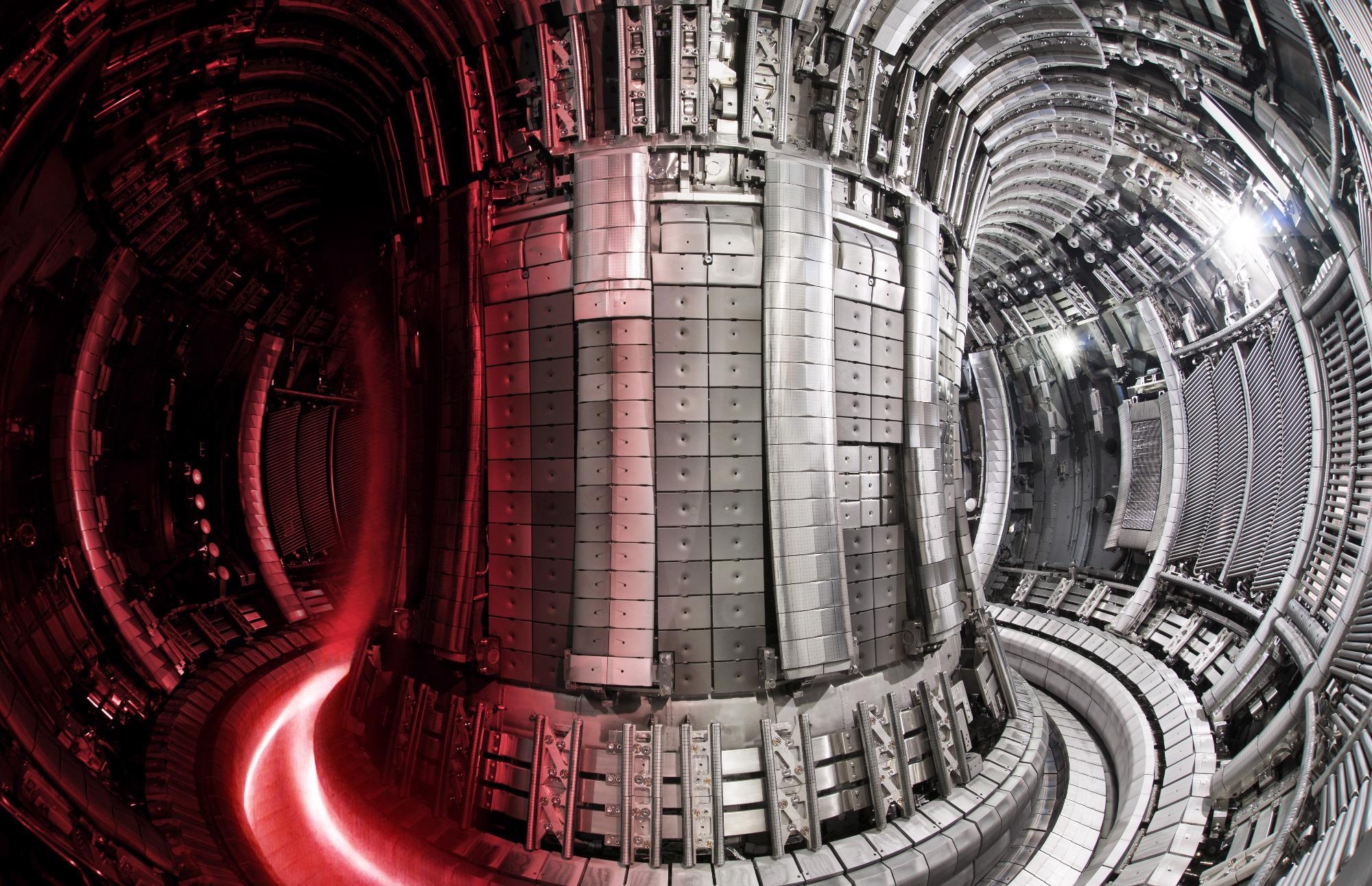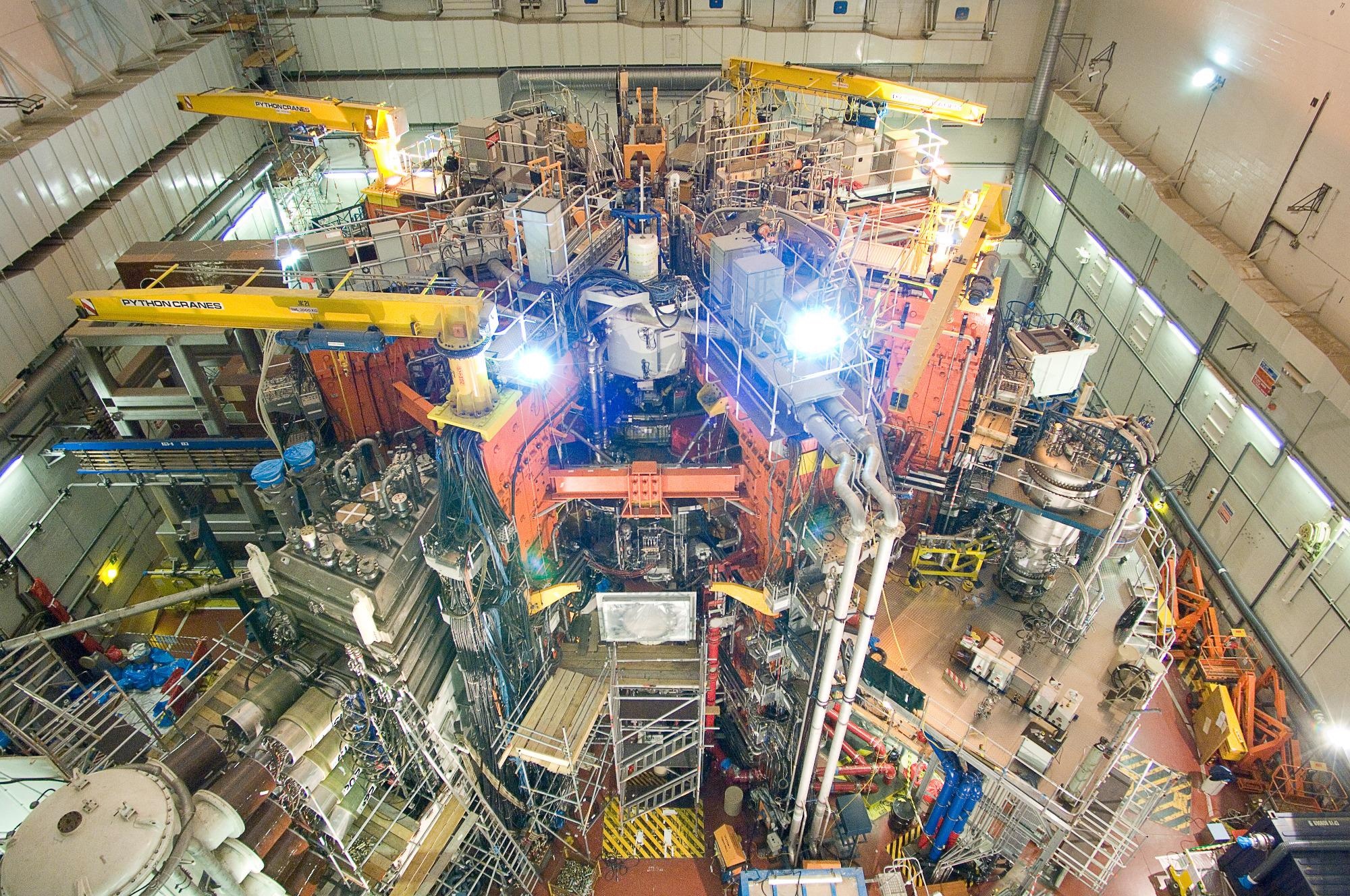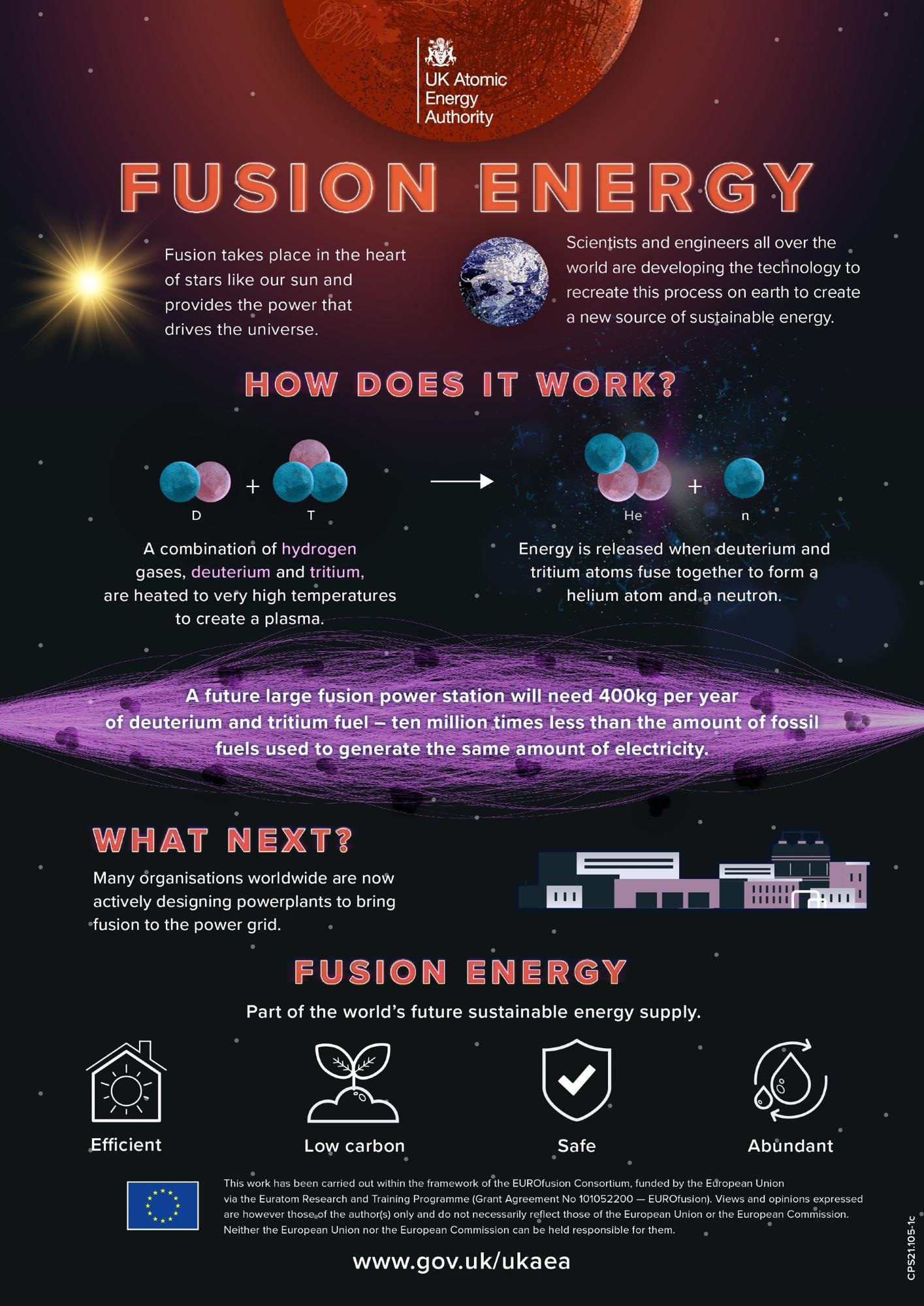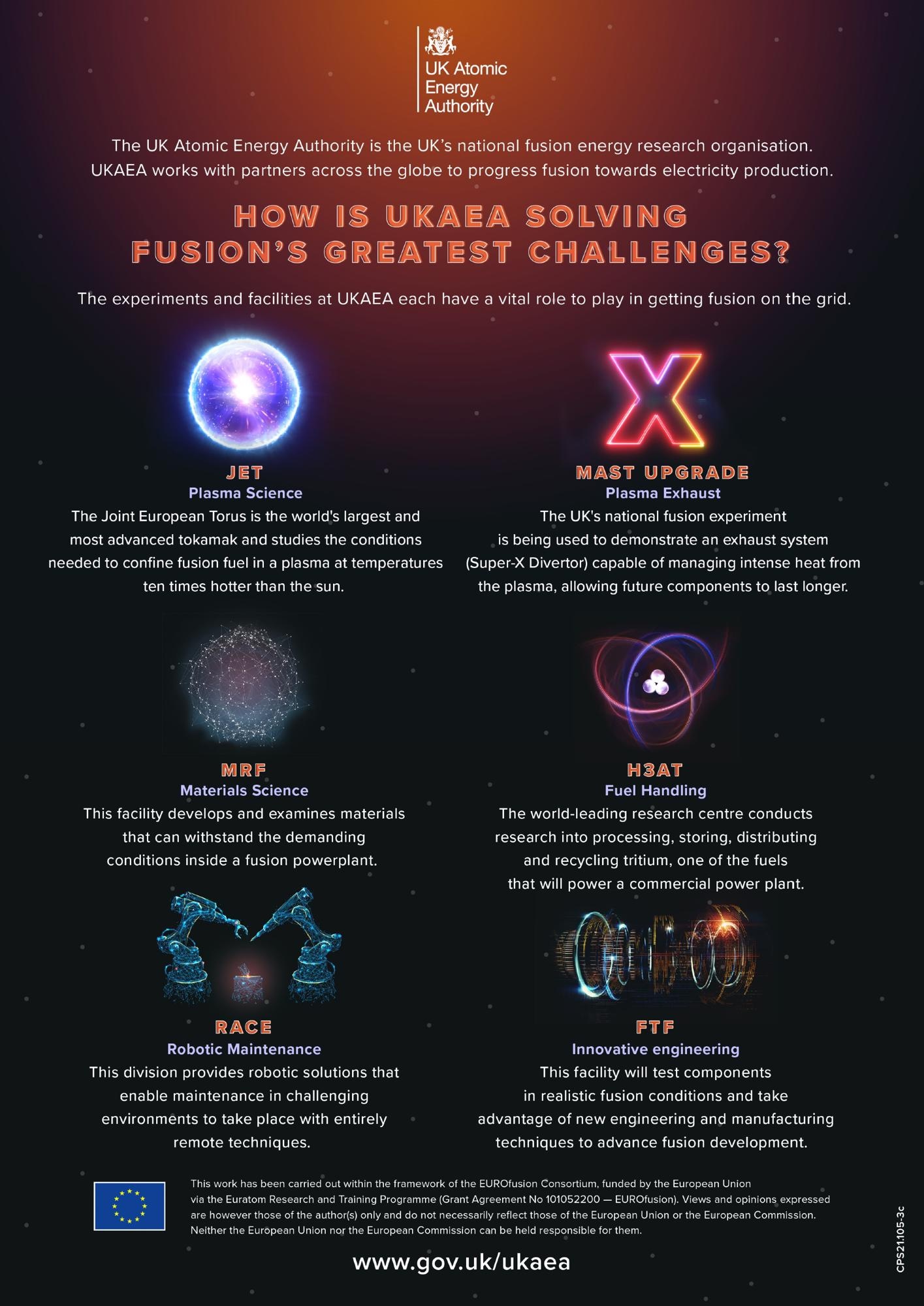AZoCleantech interviews Dr. Joe Milnes, Head of JET Operations, UK Atomic Energy Authority (UKAEA), about his team's record-breaking experiment that is helping to accelerate the future of limitless, clean energy.
What is the Joint European Torus (JET) laboratory and what key research is carried out in it?
JET is the largest and most powerful operational tokamak machine in the world and is operated by the UK Atomic Energy Authority (UKAEA) in Oxford. It is the focal point of the European fusion research program, EUROfusion, and is currently the only tokamak capable of using deuterium and tritium – the fuels that will be used in the first commercial fusion powerplants.
JET is one of the most important machines in the history of fusion energy research. We are extremely proud to have been operating it here in Oxford on behalf of the EUROfusion consortium over the past four decades. Its longevity and successes have allowed us to break down many barriers on our mission to turn this ultimate science experiment into sustainable commercial power.

The JET interior with superimposed plasma. Image Credit: UKAEA/EUROfusion
JET is a testament to the ingenuity of the original design team and the scientific and operational teams who have upgraded and enhanced the machine so many times to ensure it continues to be the world’s foremost device – even after four decades of operation.
JET 100K pulse and history. Video Credit: UKAEA/EUROfusion
What technology is currently being used at the facility?
Fusion fuels – deuterium and tritium, two isotopes of hydrogen – are injected into a vacuum vessel. The fuel is heated to around 150 million degrees Celsius and changes from a gas into a plasma.
A ring-shaped vacuum vessel is used to control the plasma, keeping it away from the chamber walls using powerful magnets. The plasma exhaust systems remove the fusion-produced helium from the chamber and over 100 diagnostic systems monitor key properties, including plasma density, temperature, impurities, and many others.

JET Torus Hall. Image Credit: UKAEA/EUROfusion
Heating systems include the use of a central solenoid coil to drive electrical currents in the plasma of up to 4 million amps, as well as high-energy particle beams and radio waves to provide auxiliary heating to the plasma. To achieve all this requires state-of-the-art technologies in vacuum systems, heat transfer, cryogenics, robotics, lasers, control, high power computing, and many others.
These milestone results are evidence that the ground-breaking research and innovation being done here in the UK, with our partners across Europe, is making fusion power a reality.
Can you explain what fusion is and how you began your research?
Fusion energy is crucial in addressing climate change through a safe, sustainable, efficient and low-carbon energy supply. It has the potential to deliver green energy for generations to come.

Image Credit: UKAEA/EUROfusion
Fusion takes place in the heart of stars, such as our sun, and provides the power that drives the universe. To recreate this process on Earth, we use a combination of hydrogen gases, deuterium, and tritium, which are heated to very high temperatures to create a plasma (this is the “easiest” fusion reaction to achieve). Energy is released when deuterium and tritium atoms fuse together to form a helium atom and a neutron.
Culham has been a major fusion international research center since the 1960s.
JET first made headlines around the globe in 1991 when it became the first machine to achieve controlled fusion. It went on to set a world record for power produced from plasma in 1997 and has continued to be refined to pave the way for its international successor, ITER.
Please can you explain the experiment your team conducted and what you set out to achieve?
JET DTE2 is the most significant magnetic fusion energy experiment worldwide in over 20 years. We set out to produce high and sustained levels of fusion energy, in conditions more similar to expected powerplant designs than previous attempts, using fuels – deuterium and tritium – that are expected to power future commercial powerplants.
The overall aims of the experiment were to:
- Test the materials that will be used in JET’s successor, ITER, currently under construction in the south of France
- To reach record levels of sustained fusion energy in a five-second pulse
- To learn how to use and recover tritium fuel in preparation for operation of ITER and the first commercial powerplants such as the UK’s STEP and EU’s DEMO programs
- To assess our predictive modeling capability and the underlying physics understanding of D-T plasma conditions
What key findings came out of the experiment?
The current experiments show that we can produce high levels of fusion energy sustained over a period of five seconds. While five seconds is clearly not sufficient for a powerplant, this significantly increases our confidence that this performance will be possible for much longer timescales in devices that will make use of recent developments in technology (such as superconducting magnets).
JET produced a total of 59 Megajoules of heat energy from fusion over a five-second period (the duration of the fusion experiment). During this experiment, JET averaged a fusion power (i.e., energy per second) of over 10 Megawatts (Megajoules per second).
JET world record pulse. Video Credit: UKAEA/EUROfusion
What enabled your team to beat your own fusion power record?
Thousands of scientists, engineers, students, and staff from across Europe worked together to more than double the previous fusion experiment record achieved in 1997 at UKAEA’s site in Oxfordshire.
The energy record achieved by JET in 1997 was 22 Megajoules of heat energy. Going from there to the current results has been a real challenge. This JET result is especially noteworthy because we brought together all the necessary ingredients – fuel mix, more relevant wall materials, and ITER relevant scenarios – for the world’s first-ever sustained D-T plasma with high energy output.
The new wall materials in particular required an incredible effort from the scientists to learn how to manage the increased impurity challenge that these presented. In addition, in the years leading up to the experiments, the engineers put a huge amount of work into upgrading systems to prepare for the use of tritium and maximize the number of diagnostics on the machine – the result has been a vast amount of scientific data which will assist ITER and the whole fusion community.
A significant breakthrough has been made in developing practical nuclear fusion. What does this mean for the future of low-carbon energy?
These landmark results have taken us a huge step closer to conquering one of the biggest scientific and engineering challenges of them all. It is a reward for over 20 years of research and experiments with our partners from across Europe.
Ultimately, fusion promises a near-limitless green electricity source for the long term, using small amounts of fuel that can be sourced worldwide and is inherently safe as it cannot start a run-away process.
As pressures mount to address the effects of climate change through decarbonizing energy production, this success is a major step forward on fusion’s roadmap as a safe, efficient, low-carbon means of tackling the global energy crisis.
What are the current limitations in nuclear energy and how could this research prove crucial in revolutionizing its future?
Fusion can be done and has been done on JET. To put fusion electricity on the grid, however, and to do this economically and reliably, requires technological solutions to several major challenges:
- Structural materials that are robust to high-energy neutron bombardment
- Plasma facing materials that can withstand intense heat loading
- Robotics maintenance systems that minimize the time taken for maintenance
- The design and manufacture of components that will survive the unique combination of conditions found in a fusion environment
- The ability to breed, store and use the radio-active tritium fuel in sufficient quantities for continuous operation
UKAEA is undertaking cutting-edge work (with the UK industrial supply chain) in all of these areas through its MRF, MAST-U, RACE, FTF, and H3AT facilities (see Q11).

Image Credit: UKAEA/EUROfusion
Have you faced any challenges during your research and how were or will these be overcome?
This was an extremely challenging campaign, and it took us right to the end before we could reach this record performance.
Running a pan-European experiment with contributing scientists from EUROfusion’s 30 members in the middle of a pandemic took some adjusting – normally everyone can be present on-site, but this time we had to learn how to do a lot remotely.
On the technical side, it was a challenge to run all the JET systems at maximum performance simultaneously which we needed for top plasma performance, but we got there in the end.
Where do you see fusion power in the next 10-20 years?
I expect to see fusion power on the electricity grid in my lifetime and everyone at UKAEA is committed to accelerating the path to this point as much as possible. Whether this milestone is achieved in the next 10, 20 or 30 years, the rolling out of hundreds of fusion powerplants off the back of this achievement will take more time, as it does with any new energy production technology. But it is clear that fusion provides one of the few options for supplying large amounts of continuous, carbon-free power to the grid in the second half of the 21st century, and for thousands of years beyond that, so it is essential that we develop it alongside other sustainable energy sources.
What are the next steps for the project?
For the next couple of years, we will be analyzing all the data that came out of this experimental campaign and publishing them in scientific literature. This will no doubt lead to follow-up experiments at JET and at other European fusion devices controlled by EUROfusion.
The record and scientific data from these experiments are a major boost for ITER, the larger and more advanced version of JET. ITER is a fusion research mega-project based in France. It further demonstrates the scientific and technological feasibility of fusion energy.
These results provide great confidence for the next stage of experiments at ITER and future demonstration plants such as the UK’s STEP program, EU’s DEMO, and several other public and private projects which are being designed to put electricity on the grid.
UKAEA’s other experiments and facilities will also have a vital role to play in getting fusion energy on the grid. These include:
- The UK’s national experiment, MAST Upgrade, is being used to demonstrate an exhaust system capable of managing intense heat from the plasma, allowing components to last longer.
- Materials Science at MRF. This facility develops and examines materials that can withstand the demanding conditions inside a fusion powerplant.
- Fuel Handling at H3AT – research into processing, storing, distributing, and recycling of tritium, one of the fuels that will power a future commercial powerplant.
- RACE, a division of UKAEA that develops and provides robotics that can operate in challenging environments with entirely remote techniques, essential for maintaining fusion powerplants.
- Innovative engineering at the FTF, a facility that will test components in realistic fusion conditions to advance fusion development
An interview with Joe Milnes. Video Credit: UKAEA/EUROfusion
Where can readers find more information?
https://ccfe.ukaea.uk/
Link to the press conference: https://www.youtube.com/watch?v=H99hvPlC4is
About Dr. Joe Milnes
 I joined UKAEA as a graduate in 2000. My background is in mechanical engineering and thermal-hydraulic modeling. During my career with the UKAEA, I have held a variety of engineering and management roles across JET, MAST-U, and ITER. As well as my current role as Head of JET operations, I chair or advise reviews of other fusion facilities across the globe.
I joined UKAEA as a graduate in 2000. My background is in mechanical engineering and thermal-hydraulic modeling. During my career with the UKAEA, I have held a variety of engineering and management roles across JET, MAST-U, and ITER. As well as my current role as Head of JET operations, I chair or advise reviews of other fusion facilities across the globe.
Disclaimer: The views expressed here are those of the interviewee and do not necessarily represent the views of AZoM.com Limited (T/A) AZoNetwork, the owner and operator of this website. This disclaimer forms part of the Terms and Conditions of use of this website.